Yes, we admit it: writing a sequel to our post about stand alone fantasy is a little…ironic. But your reaction to the first post was so enthusiastic and your reading suggestions were so great (LOOK AT THAT COVER OMG) that we decided to unleash our inner Peter Jackson and do another one!
So here’s a roundup of some of your standalone reading suggestions. Sorry if we missed any favorites—mention them in the comments, and we might just expand this into a trilogy!
The Lord of the Rings—J.R.R. Tolkien
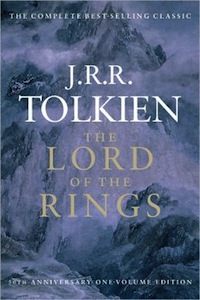
Well, OK. This was mentioned in the comments, and we cede the point. Technically they were released as one gargantuan, basically perfect book. It was only after the publisher decided they were too long for a normal human to want to read all at once that it was sliced into neat thirds. And obviously you can happily read LOTR without having read The Hobbit or The Silmarillion, or any of the various Unfinished Tales.
Plus, come on. It’s The Lord of the Rings. It should be on ALL THE LISTS.
The Palm-Wine Drinkard—Amos Tutuola
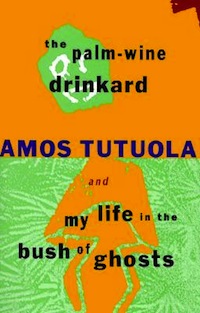
The Palm-Wine Drinkard is a controversial adaptation of Yoruba folktales. It tells the basic story of a man who travels to the land of the dead by following the palm-wine tapster, and updates folk stories into a more modern (circa mid-1950s) context. The book was widely praised when it was first published in the West, and it has since been both criticized for its depiction of its African characters and praised for its attempt to create an African analogue to the magical realism of Central and South America.
(Fun fact: Law & Order: SVU’s Odafin “Fin” Tutuola, played by friend-of-Tor.com Ice-T, is named after author Amos Tutuola!)
Who Fears Death—Nnedi Okorafor
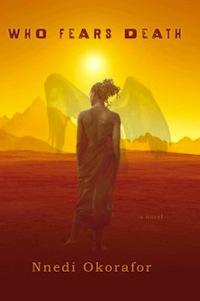
A newer book that wrestles with Tutuola’s legacy (among other things) is Okorafor’s Who Fears Death, which takes place in a post-apocalyptic future Sudan. The light-skinned Nuru oppress the dark-skinned Okeke, and practiced militarized rape. The book’s hero, Onyesonwu, is an ewu, the daughter of an Okeke woman raped by a Nuru man. As she gets older, her magical powers are reduced when she’s subjected to female genital mutilation, but she still must seek out and challenge her evil sorcerer father.
Okorafor drew on the war in Darfur for some of the elements of the book, as well as Igbo culture. The novel won the 2011 World Fantasy Award.
The Snow Queen—Joan Vinge
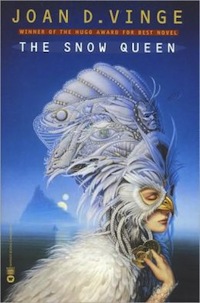
Yes, The Snow Queen—a sci-fi take on the Hans Christian Andersen tale—does have a sequel, but since it can also be read alone we included it here anyway. Joan Vinge’s novel takes us to Tiamat, a planet whose suns orbit a black hole, and whose inhabitants have split themselves into two rigid ways of life. The Winters believe in tech, and travel off-world when they can. The Summers believe in social castes and tradition.
Every 150 years, the orbit of the planet causes drastic ecological shifts which could cause chaos. To prevent this, the planet is ruled by two queens: a Snow Queen to represent the Winters, and a Summer Queen to represent the opposition in summer. The Queens live for the entire 150-year span thanks to the “water of life” taken from sentient sea creatures, and they are then ritually executed at the end of their rule. But Arienrhod, the latest Snow Queen, has other plans.
The Snow Queen won the Hugo Award for Best Novel in 1981.
The Scorpio Races—Maggie Stiefvater
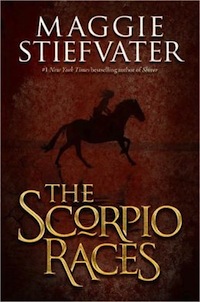
Maggie Stiefvater’s fantasy draws upon Celtic legends to create the island of Thisby, a near-future or alternate world where there are cars and radios, but no internet, and where each year the young men gather to race capaill uisce—man-eating magical water horses.
The two main characters represent two sides of society: Puck, a young, impoverished girl, wants to challenge the island’s gender norms while securing her family’s finances with the winnings from the race. Sean, an orphan raised as a man-eating magical water horse racer, believes in the strict social codes and the traditions of the past. The two racers respect each other, but only one can win.
Gossamer Axe—Gael Baudino
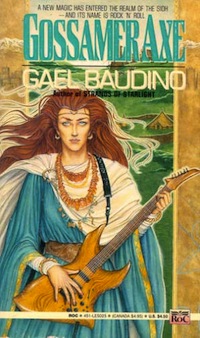
In ancient Ireland, Chairiste Ní Cummen, a harper, was trained in the secrets of music and magic, but her curiosity and pride trapped her and her lover in the realm of the Sidh. Chairiste alone managed to escape. Living in the modern world as Christa Cruitaire, a quiet harp teacher, she is all but resigned to her inability to win her beloved’s freedom, until she discovers that the volume and violence of the electric guitar and heavy metal might prove brutal enough to forcibly breach the barriers between the human and fairy worlds.
With the aid of her bandmates—who must themselves overcome inner demons of abuse, addiction, and prejudice—Christa is determined to use her newfound musical power to rescue the woman she loves.
Sadly, the book is out of print, but you can find it used!
The Etched City—K.J. Bishop
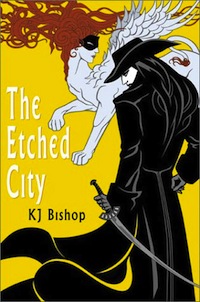
Raule is a healer, and Gwynn is a bounty hunter. Can these two mismatched friends find adventure in a new city?
What at first seems like a Victorian bildungsroman gradually becomes more obviously strange: the city the friends have come to, Ashamoil, seems to shift in geography and tone, and after the pair part ways to seek their fortunes they are face with inexplicable mysteries. Raule turns her healing abilities to a hospital staffed by nuns, but why do so many deformed babies turn up in her ward? Gwynn uses his own talents in the service of a crime lord, which is normal enough, but he’s alos entangled in the work of a mysterious artist. The city continues to warp as the characters encounter horrifying art exhibits, holy men with dark powers, and what might be drug-induced inter-dimensional travel…
Ombria in Shadow—Patricia McKillip
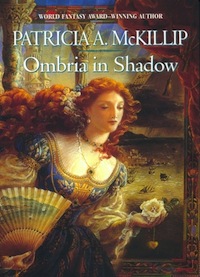
Lydea, mistress to Ombria’s ruler, Royce Greve, is driven from the castle she has called home. Greve has just died, and Domina Pearl is determined to be rid of Lydea so she can rule Ombria as regent to Greve’s son Kyel. At least until she can be rid of him, too…
But beneath Ombria, a sorceress who can wear any face she chooses works with her assistant to aid Lydea, while Greve’s bastard nephew begins hatching his own plot to free Ombria from Domina Pearl, and restore the true heir.
Ombria in Shadow won both the World Fantasy Award and the Mythopoeic Award in 2003.
To Ride Hell’s Chasm—Janny Wurts
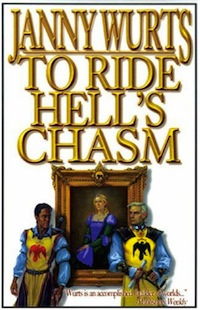
When Princess Anja fails to appear at her betrothal banquet, the tiny, peaceful kingdom of Sessalie is plunged into intrigue. Taskin, lifetime Commander of the Royal Guard, and Mykkael, a foreigner who has just won the post of Captain of the Garrison, are paired to search for her.
As the princess’s trail vanishes outside the citadel’s gates, anxiety and tension escalate. Mykkael’s investigations lead him to a radical explanation for the mystery, but he finds himself under suspicion from the court factions. Will Commander Taskin’s famous fair-mindedness be enough to unravel the truth behind the garrison captain’s dramatic theory: that the resourceful, high-spirited princess was not taken by force, but fled the palace to escape a demonic evil?
Redemption in Indigo—Karen Lord
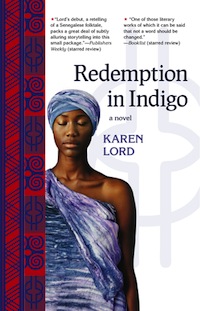
Paama is given the power of Chaos and leaves her husband Ansige—and that’s just where we start. Two years later, Ansige hires a tracker named Kwame to hunt his wife down and bring her back. Kwame doesn’t care much for the job, but he wants to travel, and this will allow him to do that. Unfortunately his quest attracks the attention of the Indigo Lord, a Djombi spirit who used to wield Chaos until he lost his power to Paama.
This Caribbean-inflected retelling of a Senegalese folktale balances hilarious chaos, multiple trickster gods, and the all-too-human emotional consequences of dealing with gods.
Butcher Bird—Richard Kadrey
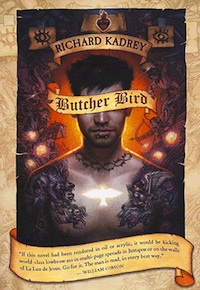
Butcher Bird mixes dark humor with even darker supernatural intrigue. Spyder is content living in San Francisco and running a tattoo shop, until a demon bite infects him with the truth. It also almost takes his head off, but luckily a blind swordswoman saves him.
But now he can see the world that most humans are blind to: a world of angels, demons, and the infinitely powerful Black Clerks. It’s the kind of world that an unassuming tattoo artist probably can’t survive, at least not without some magic, the aforementioned swordswoman, and the occasional field trip to Hell.
A Stranger in Olondria—Sofia Samatar
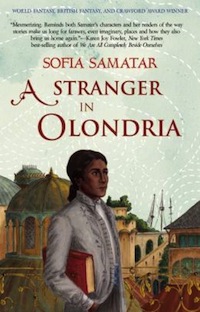
Each year Jevick’s father travels to Olondria to sell his wares, and returns home with tales of a wonderful land where books are plentiful and learning is revered. After his father’s death, Jevick gets his long-wished-for chance to see Olondria for himself, but instead of reveling in a new life of reading and romance, he is bewitched by the ghost of an illiterate girl.
When he goes to the priests for help, he finds himself caught between two warring cults, and soon realizes that in order to free himself from this curse, he must free the ghost that haunts him. But how?
Divine Misfortune—A. Lee Martinez
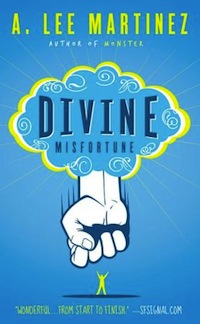
How do you pick a god? They all seem to want ridiculous things from you: blood sacrifices, tithes, chastity… Teri and Phil have always felt like they’ve done better by staying out of the god game entirely.
But when Phil’s promotion fails to come through (again) they start to look around for some divine assistance. They finally settle on a perfect match. He’s a raccoon god named Luka, and he deals in prosperity, which is exactly what the couple’s looking for. Plus, what could a raccoon possibly want from you? Well for starters, Luka needs to crash on their couch for a few days…
War for the Oaks—Emma Bull
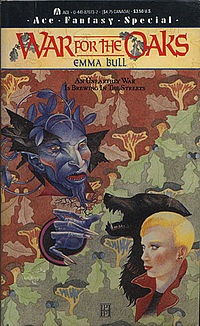
Eddi McCandry’s having a bad time. Her boyfriend’s gone—which is good—and she just quit her band—which is good. But now she feels a little adrift and her money is starting to run out. She knows she doesn’t want to get a regular day job, but if she leaves music, what else can she do?
So when a shapeshifting phouka comes into her life and tells her she needs to play a part in a battle between the Seelie and Unseelie Courts, she’s comparatively open to the idea. But why do these magical creatures need to involve a mortal in their war?
The Anubis Gates—Tim Powers
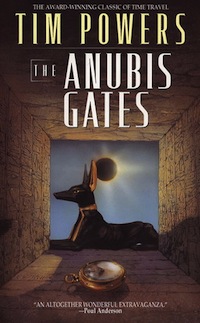
The Anubis Gates is a classic time travel fantasy that jumps form ancient Egypt to Victorian London to the 1980s. A group of British magicians attempt to summon Anubis, hoping to use the god’s power to overthrow the British Empire. This plan fails, but the spell does open gates that allow people to travel across time.
In the early 80s, an eccentric millionaire discovers the gates and gathers a few of his fellows for an outing. The (apparently deeply nerdy) group decides to attend a lecture by Samuel Taylor Coleridge, and hires a professor, Brendan Doyle, to come with them and provide commentary. Unfortunately Doyle is kidnapped and finds himself trapped in the past, working with a crew of beggars to try to get by, and befriending every Romantic poet he can find…but the magicians may not be done with their gates…
Bridge of Birds—Barry Hughart
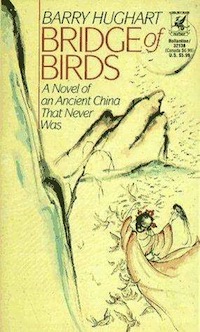
When the children in Number Ten Ox’s village begin to fall ill, he sets out on a quest to find a cure. Teaming up with master Li Kao, he journeys to find the Great Root of Power, but along the way they find adventures and challenges, labyrinths filled with monsters, tyrannical Dukes, and the key that can grant a human immortality.
The book takes place in an alternate version of China, and Hughart used the book to explore the tropes of classical Chinese novels. He also drew on a real Chinese folktale, “The Weaver Girl and the Cowherd.”
Little, Big—John Crowley
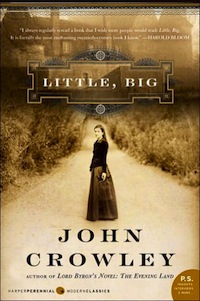
Little, Big unfolds over nearly a century as the Drinkwater clan builds an intricate relationship with the world of faerie. We meet the human family, hear rumors of magical beings, visit a dystopian City, and spend some time with a Grandfather Trout who might be a cursed prince.
Crowley isn’t afraid to slow down and ponder heady subjects like free will and fate, or to tell his story through intricate detail and gorgeous language, which led to a novel that Ursula Le Guin said, “…all by itself calls for a redefinition of fantasy,” and Thomas Disch called “the best fantasy novel ever. Period.”
Ghost Bride—Yangsze Choo
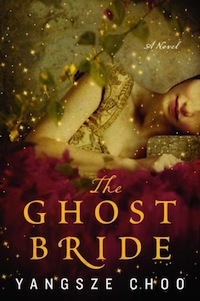
Li Lan is the daughter of a proud but fallen family. Her father’s bankruptcy has put her own future at risk, so when a marriage proposal comes from the wealthy Lim family, it seems like a blessing. But their only son died mysteriously, and the family is asking Li Lan to become a ghost bride.
The practice is not a common one, and it is often only undertaken to placate a restless spirit, factors that Li Lan must weigh against the hard fact that the marriage would give her security for the rest of her life. Her considerations are complicated when she finds herself drawn into the spirit world, and begins learning the Lim family’s secrets…and her own.
The New Moon’s Arms—Nalo Hopkinson
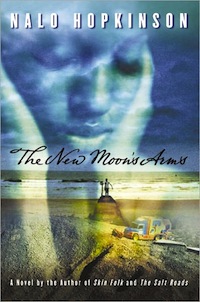
The fictional Caribbean island of Dolorosse has been Calamity’s home for 50 years. Calamity, born Chastity, has renamed herself in a way she feels is most fitting. As she begins menopause, she rediscovers her special power for finding lost things—a little tingling in the hands then a massive hotflash, and suddenly objects, even whole buildings, lost to her since childhood begin showing up around Calamity.
One of the lost things Calamity recovers is a small boy who washes up on the shore outside her house after a rainstorm. She takes this bruised but cheerful 4-year-old under her wing and grows attached to him, a process that awakens all the old memories, frustrations and mysteries around her own mother and father. She’ll learn that this young boy’s family is the most unusual group she’s ever encountered—and they want their son back.










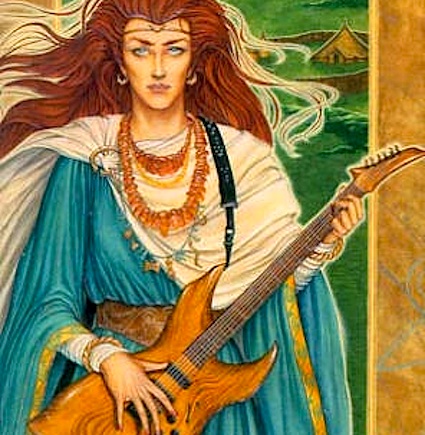
Wonderful as it is, does “Bridge of Birds” count as a standalone if it’s the first book in a series? Hughart wrote two more books in “The Chronicles of Master Li and Number Ten Ox” after this one.
The Princess Bride
Anything by Sarah Beth Durst, she is a master of stand alone novels
The City & The City
Once and Future King
Best Served Cold by Ambercrombie
Left Hand of Darkness
Stardust
Terror
Re THE ANUBIS GATES, Powers has just come out with a prequel novella, “Nobody’s Home,” published by Subterranean Press and available as an e-book as well.
Sharon Shinn (probably mostly well known for her Archangel series) has many great stand alone novels as well – Wrapt in Crystal, The Shape Changer’s Wife, Jenna Starborn (a retelling of Jane Eyre), Summers at Castle Auburn (love it – one of my favorite ‘comfort books’ to read while I’m sick and trapped on the couch) and Heart of Gold. She probably has some newer ones I haven’t gotten to yet, but most of my recent reads of hers have been parts of series she’s writing.
I believe Fortune and Fate is also intended as a standalone, but technically is part of the ‘Five Houses’ series (but not about the main cast/plot).
I second “Stardust” as it is simply beautiful (even without the Vess artwork, but is worlds better with it of course).
I realize it’s rather recent, but “The Golem and the Jinni” by Helene Wecker is quite good.
And “Palimpsest” (the book or the original short story) by Catherynne M. Valente remains perhaps my favorite piece of dream-fantasy ever put on paper.
“Bridge of Birds” is one of my very favorite novels, and it’s a standalone in the sense that it can be read on its own and be absolutely marvelous, but it does have two sequels. I’m not sure whether that disqualifies it for your purposes, but I suspect it does. (But everyone should read it anyway.)
Great minds think alike (better than “what a coincidence!” :) ). Just bought Janny Wurts‘ To Ride Hell’s Chasm.
Tam Lin – Pamela Dean
I am not so worried about The Snow Queen having a sequel, as about the fact that it is science fiction. I really don’t think it is a borderline case; the fact that everything has a scientific explanation is important to the story.
I also find The Once and Future King odd for a list of standalones, because it is itself a series; it consists of four novels which were first published separately, and which, unlike the volumes of Lord of the Rings, are stories with a beginning, middle and end.
Tourists — Lisa Goldstein
Some great books made it on these lists, but I can’t believe neither of them contains Lord of Light or A Night In the Lonesome October. Zelazny wrote beautiful stand alone work in both sci-fi and fantasy.
A Face like Glass by Frances Hardinge
Wonderful, wonderful book
Nice to see To Ride Hell’s Chasm on this list — probably my single favorite standalone fantasy. (In case anyone’s interested, I wrote something about it in my Under the Radar column about Wurts a while back.)
The Eye of the World by Pauline Alama was a book that I got as a freebie at a convention and have never seen anywhere else. I love the matter-of-fact way that it deals with faith and a world that is literally falling apart, and its unusual protagonists.
Steven Brust – To Reign in Hell
Paula Volsky – Illusion
Catherynne Valente – Deathless (or) Palimpsest
Katherine Kurtz – Lammas Night
Guy Gavriel Kay – The Lions of Al-Rassan
Let me again put in a recommendation for Matt Ruff’s Fool on the Hill, which is little short of astonishing when you consider that he wrote it while still in college. It’s also the sort of kitchen-sink fantasy that goes spectacularly off the rails 99 times out of 100…but Ruff makes it work here, so that you get a sort of hybrid between early urban faerie (Bull, de Lint), and a mad tonal cross between T. H. White, Douglas Adams, and Tad Williams (specifically the Williams of Tailchaser’s Song).
Ruff’s work since has never been less than fascinating, but I really think that Fool on the Hill is the purest, most magical of his books, and one that stands with the best of the genre.
If anyone wants a copy of Gossamer Axe they can have mine, if it’s still kicking around. Gael Baudino’s a bit too strident for me, as I recall.
War for the Oaks, though … one of my top ten books. Need to read that again. And I’ll second Susan’s rec of GGK’s Lions of Al-Rassan, and add Tigana – another one of my top ten. Ooh, and there’s Tam Lin – another one…
36 titles, and not a mention of “Replay” by Ken Grimwood? Award winning, and apparently fotgotten, this complete and compelling book has profoundly affected everyone I know who has encountered it . . .
Zelazny’s ‘A Night in the Lonesome October’
I read Gossamer Axe many, many moons ago — we still have the paperback we read back then, most avidly. I devoured everything else I could find by Gael Baudino, and it was a horrible shock to see what a raw deal she got from her publisher.
She had written a new series, you see, one with a fascinating plot — the culture was held together by the sacred writings of the priests, which were supposedly involate. But then some old, old writings showed up, that looked superficially like the sacred texts, but they had curious markings on them, changing words, correcting spellings, that sort of thing. It was a discovery that could shake the world — the sacred texts had been edited!
But Baudino had an editor that simply could not understand what the markup term “Stet” means. The galleys would come out, and all of the sacred texts would…have all of the marked corrections MADE. They were supposed to show the progression of corrections over time, but none of the markup was there, only the “corrected” text. The proofreaders, her editors, and the publisher simply COULD NOT UNDERSTAND that this was literal text, and it should be set up and published AS WRITTEN, including all of the markup! They kept performing the corrections shown by that markup, no matter how large she wrote STET in the margins, no matter how many times she called people or wrote and complained.
She even got it in writing that THIS TIME, for sure, they’d get it right. And sure enough, the last galley was done as she wanted. But somewhere between that last galley and actual publishing, some wag had looked at this and said “this isn’t right, this is all still marked up for corrections…I’d better fix this…good thing I spotted this, or it would have gone to print this way!”
Yes, the published copies had the corrections done to the “sacred texts”, so the entire plot of the book made no sense at all! The reader could not see that there was any controversy at all about those “texts” — they all looked like the final version.
That was the last straw for Baudino, and supposedly, she stopped trying to publish her works, because the publishers simply would not listen when she said anything, and lied to her when they did.
Ditto for Tam Lin, I just read it over Halloween and I still find myself phasing out and thinking about it.
Charles de Lint has some great stand alones too. Yarrow, and Little Country leap to mind.
Still no Neil Gaiman? Seriously? American Gods, Anansi Boys, Neverwhere, Stardust, The Ocean at the End of the Lane, The Graveyard Book…
I missed Lud-in-the-Mist too. Written by Hope Mirrless. It’s wonderful.
Another amazing fantasy book: Skellig, byDavid Almond.
And Horns by Joe Hill is one of the best written books I’ve ever read. Heart-Shaped Box is great too :)
Ready Player One
The Emperor’s Soul
The Moon is a Harsh Mistress
Thanks for another great standalone list, and it reminded me that I’m long-overdue for another re-read of Crowley’s Little, Big. Wonderful book.
@24 and others – list is standalone fantasy, not SF. So no Ready Player One, Lord of Light, Moon is a Harsh Mistress, etc.
‘The Lord of the Ring’, ‘Bridge of Birds’ and ‘Little Big’ are the only ones on this list I have read and they already are on my top ten list. I will then try my best to put my hands on all the other ones.
In the meantime, I will gladly add my vote to :
The City and the City – China Miéville
Little Country – Charles De Lint
Stardust – Neil Gaiman
And I nomimate also :
Cards of Grief – Jane Yolen
Mort – Terry Pratchett
Gnomes – Huygen and Poortvliet (i know it is not a novel, but it is, in my opinion, a major fantasy work)
Sad not to see “Ash: A Secret History by Mary Gentle” on the list. This is a massively underrated alternate history fantasy novel which is huge, detailed and wholly immerses the reader into an amazing alternative Europe which is having strange effects on the modern world.
Another vote for Tam Lin and Summers at Castle Auburn – Tam Lin in particular is on my perpetual re-read shelf.
Some other nominations:
The Autumn Castle – Kim Wilkins
Child of a Rainless Year – Jane Lindskold
Hannah’s Garden – Midori Snyder
A Rumor of Gems – Ellen Streiber
You could add just about any other Tolkien / Middle-Earth book to that list. The Hobbit, The Children Of Hurin, The Silmarillion… I also read Neil Gaiman’s The Ocean At The End Of The Lane earlier this year, and that’s a breathtaking standalone as well.
Frank Herbert wrote Dune series, but he wrote so many more that were stand alone novels: The Whipping Star, the Dosadi Experiment, etc. etc. Plus Roger Zelazny wrote many stand alones as well. When you go back to early authors, that’s where you find some of the best. I have to admit, I tire of reading three to five books to get one full story.
I just pulled these from my shelves, and if I keep them I like them:
Patricia McKillip’s The Changeling Sea
Paula Volsky’s The Wolf in Winter (my favorite of her all very good standalone books)
Robin McKinley’s Beauty or Deer Skin
RA MacAvoy’s Tea with the Black Dragon (it is standalone, despite a later written sequel that isn’t that good)
Poul Anderson’s Three Hearts and Three Lions
Patricia Briggs had a few, When Demons Walk is my favorite
Nina Kiriki Hoffman’s The Thread That Binds the Bones
Pamela Dean’s The Secret Country and especially Tam Lin
Michael Moorcock’s The War Hound and the World’s Pain (my favorite book cover ever too)
Tim Power’s The Drawing of the Dark (his first published novel, and others naysay it but I like it a lot)
Tanith Lee’s Cyrion, which is at least standalone- it’s short stories about the main character framed in a novella.
I don’t know whether you would count Gene Wolfe’s Peace but I think the list would be weaker without it.
@31 – Dosadi actually is a sequel to Whipping Star (same protagonist). By the way, I love Dosadi and commend it to all for your reading enjoyment. Great concept – creation of a horrendous manmade planetwide environment for the purpose of creating supersoldiers for those who survive – that does not turn out precisely as planned.
Zelazny, to me, is the one with significant standalones (This Immortal, Lord of Light, Doorways, Damnation Alley etc) – albeit sci-fi when this is supposed to be a fantasy list.
I would add in Tigana by Guy Gavriel Kay as another great fantasy standalone.
I am SO THRILLED to see Tor not just recommend “Gossamer Axe” but use its cover for this article’s main image! Gael Baudino has been one of my favourite authors since I was a teen and it makes me sad that so few people have heard of her–presumably even fewer now that she’s out of print.
If you like “Gossamer Axe”, I strongly recommend Baudino’s “Strands of Starlight” series, and the first book of her “Dragonsword” trilogy. (I had mixed feelings about the second and third books in the trilogy at the time I read them — but that was in my early 20s, and I’m not sure how much I trust my own opinions from back then. The first book, however, is fantastic. (And fantastical! Badum-tsh.))
Another (out of print) standalone book I love is “Cold Iron” by Melisa Michaels. A hardboiled detective goes on the road to try to figure out who’s threatening a famous (and Jim Morrison–esque) elven rockstar. Things quickly progress in directions she never expected. The characters are all damaged people in one way or another, so the subject matter is dark in places. But they’re also quite well-rounded, compelling characters, and there’s as much humour as darkness in the book, which keeps it from getting too depressing. (Plus, the 80s-revival aesthetic of the univerise is pretty darn awesome.)